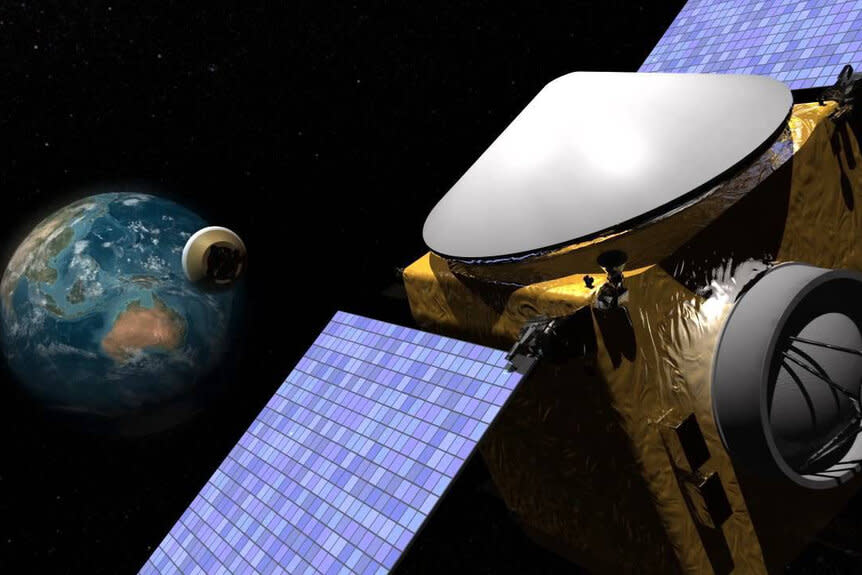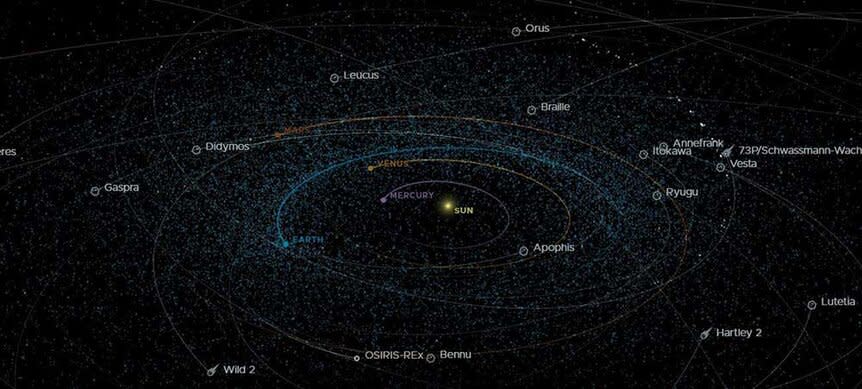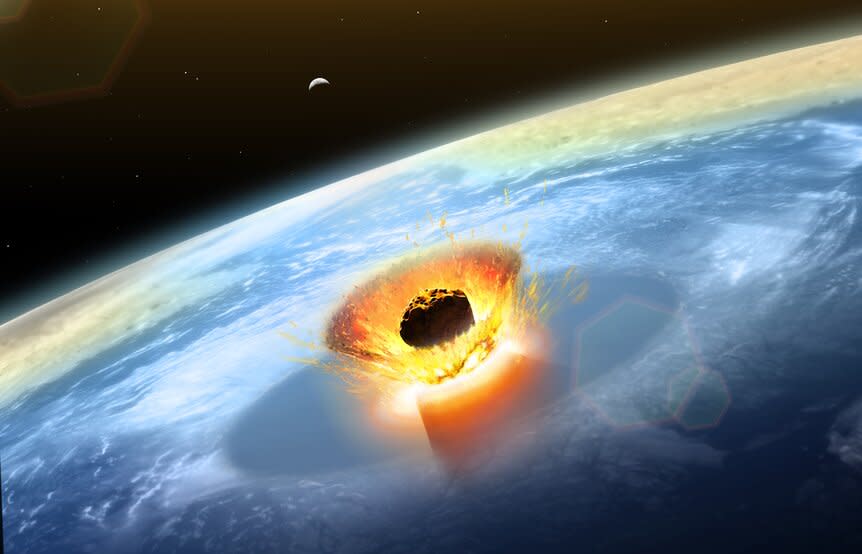NASA Charts Mission to Apophis, the Near-Earth Asteroid Named for the Egyptian God of Chaos

There’s never a good time for an asteroid to hit, but there might be a worst time. In the 2021 film Asteroid (streaming now on Peacock), a family moves from the big city to their new home in the country just before learning that an asteroid is poised to strike that exact spot.
In real life, NASA’s Center for Near-Earth Object Studies (CNEOS) keeps an eagle-eyed watch on the orbiting objects which might pose a threat. They’ve got a list of potential impactors and it’s constantly being updated with new discoveries and up to date orbital information to calculate the probability of a dangerous dust up in the near future. For a while, the asteroid Apophis, named for the Egyptian serpent god of chaos, was public enemy number one (that has since changed with new data) and now NASA is kicking off a mission to visit one of our closest asteroid neighbors.
NASA’s OSIRIS-APEX Mission to the Asteroid Apophis

OSIRIS-REx Return Photo: NASA
The OSIRIS-Rex mission to the asteroid Bennu successfully wrapped up a few months back when the spacecraft returned to near-Earth space and dropped off a package filled with tiny asteroid rocks. While scientists are busy studying the contents at Johnson Space Center in Houston, the spacecraft is happily bending its path toward its next target.
RELATED: The Asteroid Apophis Isn’t Likely to Hit Earth. But if it Did, What Could we Do?
The original mission was a smashing (literally) success which involved orbiting Bennu for years, mapping the surface, touching down to grab a handful for ourselves, and returning to Earth. When it got back home, the spacecraft’s instruments were still running smoothly, and it had about a quarter of its fuel left in the tank. So, scientists spun up an extended mission to Apophis.
With a new mission and a new name – Origins, Spectral Interpretation, Resource Identification, and Security - Apophis Explorer – the newly dubbed OSIRIS-APEX is on a winding path toward the asteroid Apophis. Meanwhile, Apophis is on its way toward us, and the two will rendezvous during the asteroid’s close pass with our planet in 2029.
The asteroid, which measures approximately 340 meters (1,115 feet) across at its widest point, will arrive in April of 2029 and is expected to pass within 32,000 kilometers (20,000 miles) of the Earth. That’s less than a tenth the distance from here to the Moon. That’s also the closest pass for an asteroid of this size that scientists have ever known was going to happen in advance.
“OSIRIS-APEX will study Apophis immediately after such a pass, allowing us to see how its surface changes by interacting with Earth’s gravity,” said Amy Simon, the mission’s project scientist, in a statement.
OSIRIS-APEX Will Study How Asteroids Change After a Close Pass with Earth

A scientific diagram shows the asteroids surrounding earth. Photo: NASA/JPL/CNEOS
OSIRIS-APEX will start taking pictures of the asteroid’s surface about two weeks before closest approach and it will stay with Apophis for about a year and a half. During that time it will do many of the same things it did at Bennu, gathering scientific data which could help us understand how asteroids form and how they change as they move around the solar system.
The spacecraft will use its onboard instruments to map the surface of Apophis in great detail, much like it did with Bennu. Toward the end of the mission, OSIRIS-APEX will descend to within 16 feet of the surface and fire its thrusters to kick up some dust and get a look at what’s going on beneath the hood. It did something similar at Bennu, using the scattershot effect to gather the sample. The extended mission is operating on the dregs of the primary mission and doesn’t have enough fuel or the hardware required to gather another sample and bring it home. But the science it gathers during and after the asteroid’s close approach will give us unprecedented access to this sort of potentially dangerous interaction.
RELATED: Astronomers Find a Dozen Unexpected Space Objects Way Outside the Kuiper Belt
Between now and April 2029, the spacecraft will circle the solar system getting gravity assists from the Earth and the Sun to move it into position for the arrival of Apophis.
No, Apophis Won’t Hit Earth in 2068

Photo: MARK GARLICK/SCIENCE PHOTO LIBRARY/Getty Images
When Apophis was first discovered, our understanding of its orbit was not well constrained. The possible paths it might take in the future were wide and some of them brought the asteroid into contact with the Earth.
The worry was that the 2029 pass might alter Apophis’ orbit such that it smacked into us on a subsequent lap around the Sun. The 2068 pass had astronomers particularly worried for a little while. However, as previously mentioned, the folks at CNEOS and scientists around the world spend a lot of time checking out objects like Apophis to dial in on what they are doing and what they will do. Thanks to years of additional research, we now know that Apophis won’t strike the Earth for at least the next century. Beyond that, orbits become increasingly difficult to predict and our certainty begins to wane.
“A 2068 impact is not in the realm of possibility anymore, and our calculations don’t show any impact risk for at least the next 100 years,” said Davide Farnocchia from CNEOS, in a statement. “With the support of recent optical observations and additional radar observations, the uncertainty in Apophis’ orbit has collapsed from hundreds of kilometers to just a handful of kilometers when projected to 2029. This greatly improved knowledge of its position in 2029 provides more certainty of its future motion, so we can now remove Apophis from the risk list.”
If you were hoping to recreate Asteroid (streaming now on Peacock) in your own life, you’re going to have to find some other space rock.

